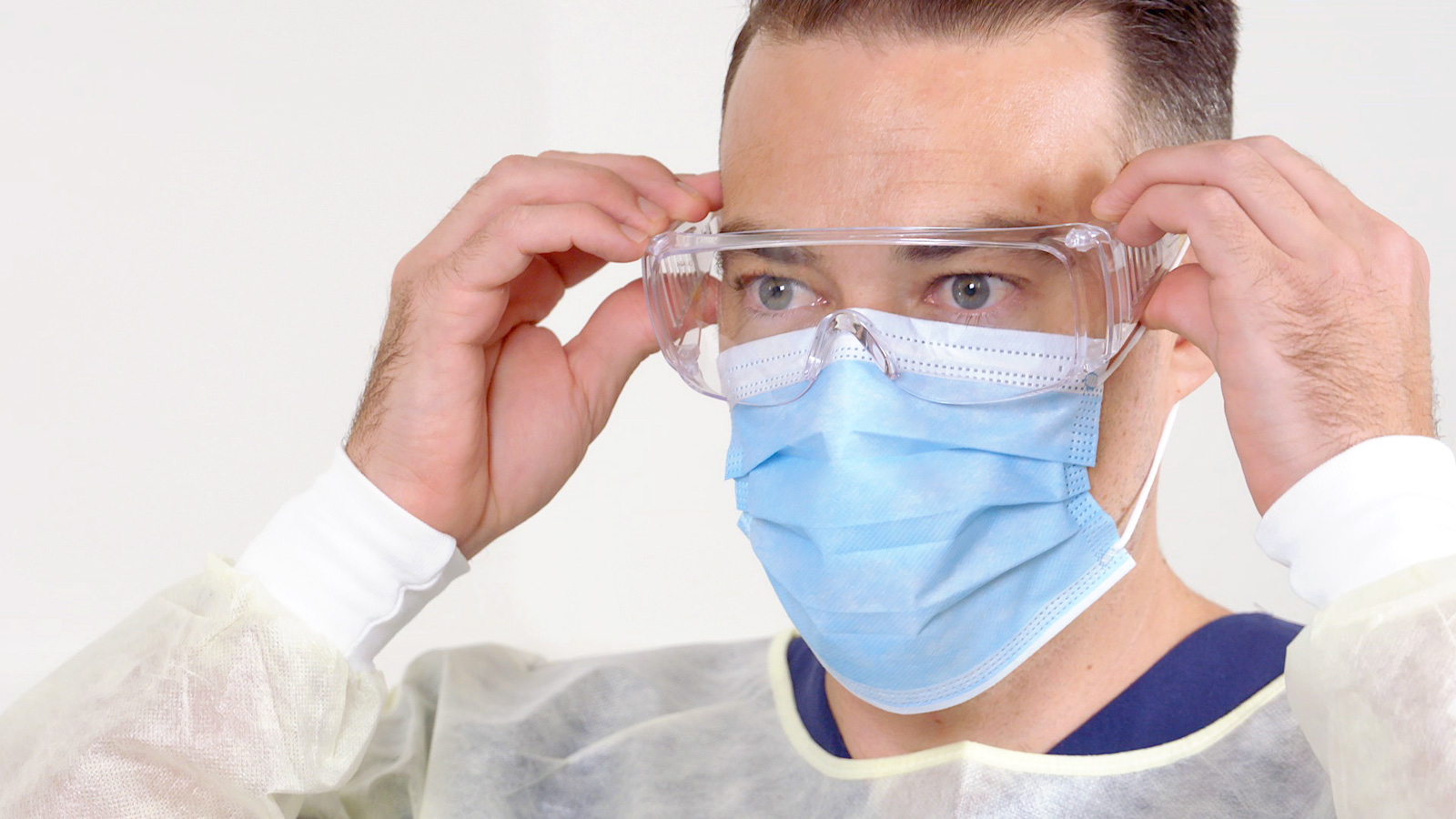Frontline Health Worker
In early 2020, Nurse Natasha Wong found herself out of her specialty of orthopaedics and assigned to the COVID-19 Ward at Royal North Shore Hospital.
Natasha Wong RN, Royal North Shore Hospital
Natasha Wong recalls how frontline staff were supported by the Infection Prevention and Control (IPAC) and Infection Diseases (ID) teams.
I definitely think there were some concerns with PPE especially with the evidence that came across when COVID came in, definitely felt there was a lot of uncertainty about which PPE was safest but our teams here definitely helped us, our IPAC team and our ID team educated us and informed us of all the new changes supported by the CEC and when the stock came through they were all different types of PPE which was also new to us but we were trained on how to don and doff PPE correctly with our COVID patients. I was aware that the CEC and our teams here were reviewing the quality of the PPE which was really important to us. I also knew if there were any issues with quality or stock that we were able to follow a process where we could report any issues with our PPE. Working on the COVID team there was a secondment that came up for the IPAC team here at Royal North Shore and I applied for that so it was a six-month secondment with Infection Prevention and Control and I applied primarily because the IPAC team was such a big help to us especially on the COVID ward, very supporting and I wanted to be part of that and learn a lot about infection control.
I was aware that the CEC and our teams here were reviewing the quality of the PPE which was really important to us.
The Review Team
Personal Protective Equipment is a term describing wearable protection such as masks, gowns and gloves.
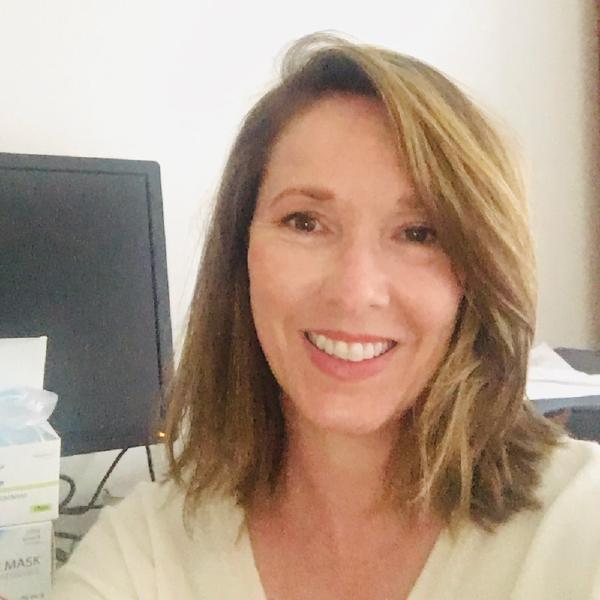
Rebecca Robertson, Product Critical Supply Manager, HealthShare NSW, NSW Health
Rebecca Robertson is the Product Critical Supply Manager at HealthShare NSW. In ordinary circumstances, medical devices such as masks and gowns that need to be supplied in very large quantities would be purchased or procured on contract after a process of around 6-12 months. With the sudden rise in demand and potential for even more demand the processes of supply were under review. In the early days Rebecca recalls sending PPE sample products to Kathy Dempsey, CEC’s Senior Manager Healthcare Acquired Infections (HAI) at her own home.

Kathy Dempsey, Senior Manager Healthcare Acquired Infections, Clinical Excellence Commission
We had great confidence in our suppliers, we knew where they were coming from and often they were on contract all of a sudden we didn’t have that ability to purchase any, there was nothing available. It was the very early days of COVID as such so where we were sourcing all these different samples of PPE and literally packaging them up and sending them to Kathy Dempsey’s place.
Reviewing of product started very early on in the piece sort of round February March and it was a little bit haphazard in the initial phases where there was a lot of sourcing of product outside of our usual processes where we would usually have our usual suppliers where we knew the products, we had great confidence in our suppliers, we knew where they were coming from and often they were on contract all of a sudden we didn’t have that ability to purchase any, there was nothing available. It was the very early days of COVID as such so where we were sourcing all these different samples of PPE and literally packaging them up and sending them to Kathy Dempsey’s place you know at home so it was all very random and a bit out of control and Kathy was drawn in to review all of our documents and it was just very haphazard in those initial phases when all of this was stood up.
The risks were quickly recognised. HealthShare NSW set up a centralised review team and process and brought CEC experts in for a formal review day at their Yennora facility to do a ‘table top’ analysis.

Some of the PPE Review Group at HealthShare NSW Yennora Facility.
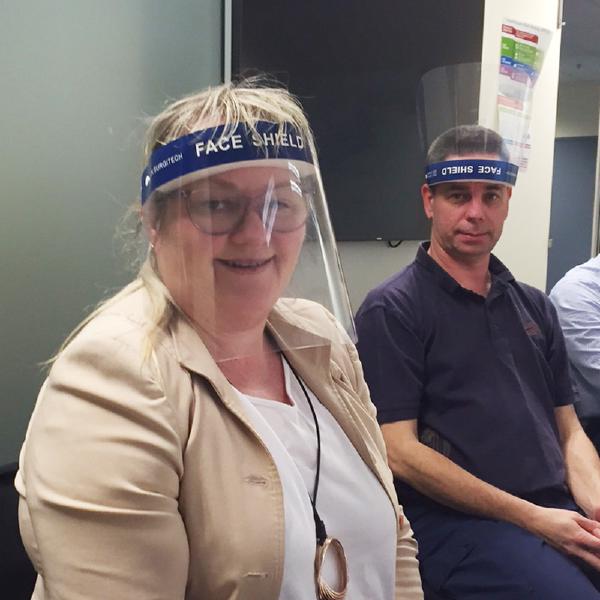
Kathy Dempsey, Senior Manager Healthcare Acquired Infections, Clinical Excellence Commission, in a review session.
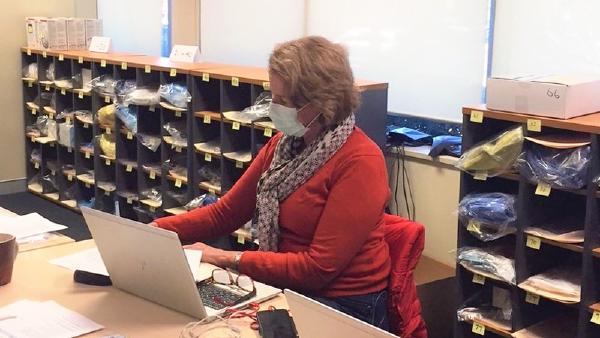
Cate Malone, CEC’s Senior Manager, Governance and Assurance reviews a product with other products in the background.
A lot of companies had been stood up quickly as suppliers which were very new to working with Health and working with requirements which are very specific.
We go through all these steps and processes to validate the supplier, the documentation and we bring the product in we look at the product hands on, this is where our HAI team, the CEC team, go through all these products hands on then we review it again between the CEC to make sure everything’s lined up.
We bring in these products that have not been validated and we’ve never seen them before and we have new suppliers who’ve never worked with Health so we’re really guiding these suppliers in what they need to provide in terms of validation documentation, we go through all these steps and processes to validate the supplier, the documentation and we bring the product in we look at the product hands on, this is where our HAI team, the CEC team, go through all these products hands on then we review it again between the CEC to make sure everything’s lined up, then we put communication together and that goes out to the LHD and then it’s up on our customer facing teams so we’ve really ticked a lot of boxes to get one product out. It’s a huge amount of work to get through and if there’s discrepancies there’s lots of us picking it up, we pull it right back into that review process. We’ve always been challenged but there’s always been supply or we’ve worked our way around that and that’s where the CEC and HealthShare NSW worked together if there’s been real challenges say around one level of surgical gown we’ve worked together to find ways around to find ways to operationalise other alternatives.
A critical part of the review process was contribution from teams in Local Health Districts, the ultimate destination of the reviewed products.
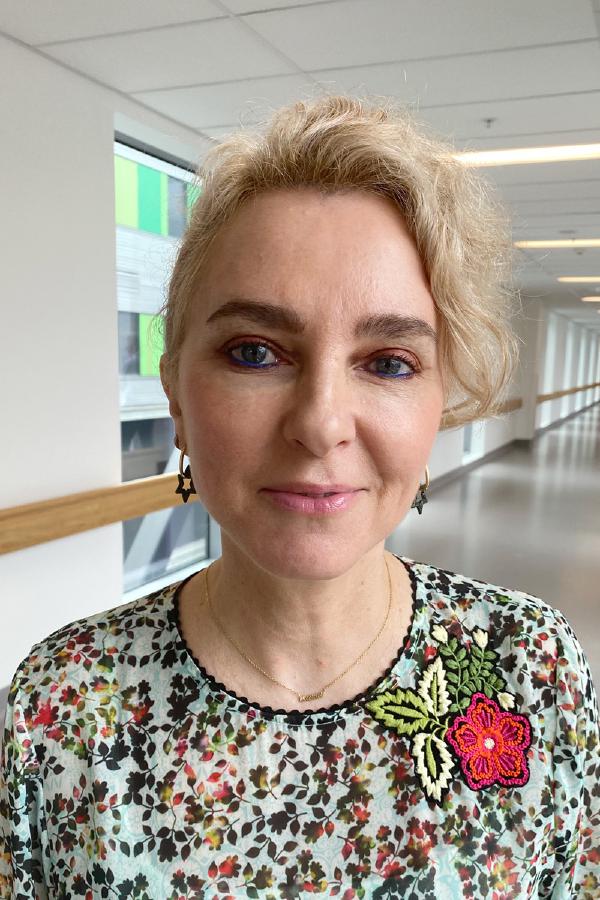
Jo Tallon, Director Infection prevention and Control North Sydney Local Health District who participated in the PPE product reviews.
If you are expecting people to be on the frontline then they want to know that there’s some level of guarantee that there’s somebody with some content expertise is able to review that product and say yes I would wear that, so that’s basically what we were doing, we’re all clinicians, clinical nurse consultants, we’d been clinicians at the coalface and we would never put our staff in harm’s way.
If people don’t feel competent or confident with the PPE that is being provided you know it just causes concern or some fear amongst our frontline staff and we don’t want them to have that fear. I think that because supply before COVID had never been an issue, it was always plentiful and it was the same thing and it wasn’t just the quality of it, it was that supply was changing a lot and we’ve never encountered that before, so we’ve never encountered before where staff couldn’t get what they call the duck bill mask which is the BSN and were bringing in masks that were different colours and different shapes, different texture, that didn’t feel as good that the quality didn’t feel as good and if you are expecting people to be on the frontline then they want to know that there’s some level of guarantee that there’s somebody with some content expertise is able to review that product and say yes I would wear that, so that’s basically what we were doing, we we’re all clinicians, clinical nurse consultants, we’d been clinicians at the coalface and we would never put our staff in harm’s way.
Up to 30 June 2020, the PPE product review team conducted 226 assessments with only a fraction of those products making it through rigorous testing.
CEC Expertise
Cate Malone is the Senior Manager for Governance and Assurance at the CEC and has worked in NSW Health for over 38 years. Cate has a nursing and midwifery background and holds a Master of Education. Her career has focused on implementing quality and safety framework within NSW and supporting staff with a systems and continuous quality and safety improvement focus.
CEC Partnership with HealthShare NSW - Cate Malone, Senior Manager for Governance and Assurance
Cate Malone reflects on the partnership with HealthShare NSW and the requirement of the Therapeutic Goods Association (TGA)
So HealthShare are responsible for procurement, HealthShare as part of their procurement process sought the experts which were the HAI team to see that they were fit for purpose, CEC were supporting that and we really wanted to make our staff and patients safe. So when it became more and more ad hoc we suddenly or we realised that a proper process, a structured framework of collaboration between HealthShare and CEC was required. With new suppliers coming into the market and a potential explosion of demand on products meant that we needed to source new suppliers and with new suppliers comes risk and particularly when there’s demand and panic buying that we saw happening in the supermarkets for example well we didn’t want to see that happening in our health system so this is why this product governance review process was established to ensure that safety of our staff and our patients. We got together really early and we documented the process and the framework and we agreed on our roles and responsibilities and we developed the tools and the checklists and the registers that needed to happen with this. We were absolutely meticulous that no product was going to get through to our staff in NSW Health that did not meet the requirements of the Therapeutic Goods Association so all product needed to have an ARTG number, we then, you can’t just stop at that because the TGA were also trying to meet the demand for the nation so they had laxed some of their usual processes to make it easier for new suppliers to obtain an ARTG, to be registered on the Register of Therapeutic Goods. So we wanted to make sure that if they have an ARTG number it means the TGA is aware of them and that is actually a legislative requirement because a face mask or anything that is used in Healthcare to prevent transmission of disease is termed a medical device and all medical devices in Health must have an ARTG number. So, we went through that process – it was a huge learning curve for us all to learn all these new terms and the requirements and the policies and to make sure we had everything correctly done, so we’re very proud of the fact that we can say that no product came through our process that has been recalled by the TGA as part of their post market review, so far over a thousand products have been cancelled by the sponsor as part of the post market review and not one of those products has been a product approved by the CEC so we’re really proud of that.
Panic buying that we saw happening in the supermarkets for example well we didn’t want to see that happening in our health system.
CEC Partnerships with Local Health Districts (LHDs)
Cate Malone explains the importance of input from CEC partnerships with local health districts in the review and supply of PPE
Our partnership with the LHDs during this process was really important, there were a couple of points of engagement, so we had the Infection Prevention and Control practitioners from the districts, they joined us to review these products, to make sure they were fit for purpose that they fitted, that they felt correct, you know that mask – it says it’s a level 3 mask, does it look like a Level 3 mask? And they’d cut it and they’d tear it and they’d get their syringes and squirt it with water – all sorts of funny things were going on in our reviews to make sure that the product was fit for the purpose it was stated to be on the paperwork provided by the TGA and provided by the company. The other really important point of engagement was through our product managers at our local health districts as well because we’ve got new product, and with new product, particularly in the midst of a pandemic, you know it’s a different colour gown, what does this mean because sometimes we colour code things don’t we or it feels different, how can we get our staff to trust that we are being really diligent about any new product that we’re giving, so our product managers I think would have had to face a lot of those questions and we met, they were part of our meeting, we asked to join their fortnightly meeting where they raise issues, and we were there we would try to respond to any of the questions that the product managers raised and it was really good because they would also raise issues that would make us think ok we’ll go back and recheck that and we’ll make sure for them and give that reassurance so they could go and give that assurance back to the staff, so every new product needed to come with an information sheet and that was something that HealthShare and the CEC provided jointly to come with the product, there was really important partnership and collaboration there.
We would try to respond to any of the questions that the product managers raised and it was really good because they would also raise issues that would make us think ok we’ll go back and recheck that and we’ll make sure for them and give that reassurance so they could go and give that assurance back to the staff.

